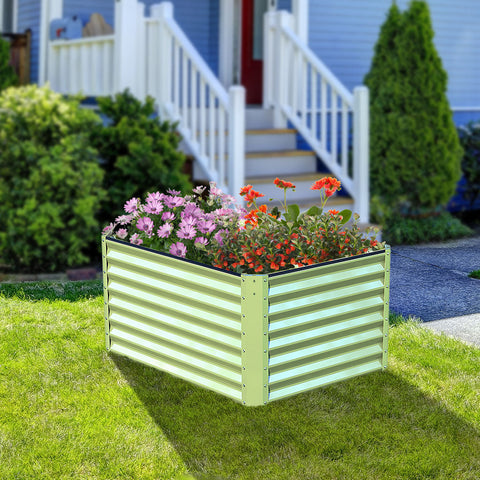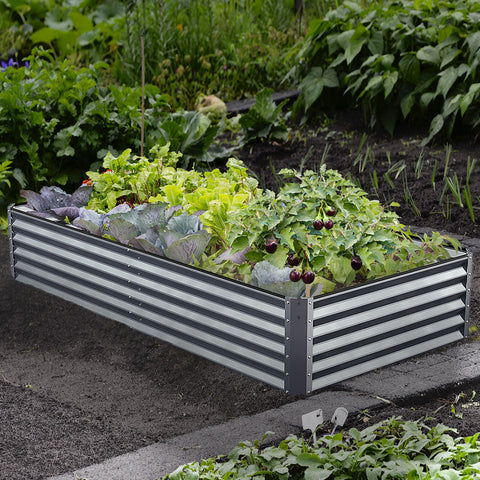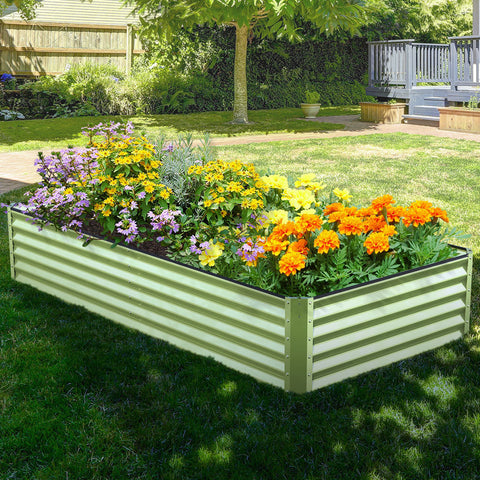Lettuce is a plant with cool weather, from which you can collect leaves or harvest whole plants. You can even harvest lettuce as a light green! With all the varieties, gardeners can easily feel confused. We will provide the ultimate guide on how to harvest lettuce and tips on how to store harvested lettuce correctly.The following content also has some reference value for raised garden beds.
Planting your own lettuce is an interesting way to start or end this season. They can grow directly in the soil, on raised beds, or in small spaces such as container gardens. To extend your season, consider providing shade during the growth of your lettuce, which can reduce heat exposure and delay bolting.
Please remember to ensure that your tools are clean and disinfected when harvesting. Scissors, garden scissors, knives, or grass scissors can be used to collect lettuce, or baskets or containers can be used to hold crops. When you are ready to store, you will want to have paper towels and plastic storage bags handy.
When should I harvest lettuce?
The package containing lettuce seeds will provide an estimate of when harvesting will begin. The recommended date on your lettuce seeds should serve as a guide and be observed in conjunction. Young salad vegetables can be harvested before the end of the first month of cultivation. They develop after the slightly green stage and are only a few inches tall.
After 6-10 weeks of planting in your garden, leaf lettuce and compact lettuce heads will begin to mature. When the leaf lettuce is about 4 inches tall, it can be harvested. Before harvesting the entire head, compact external leaves can be collected during the growing season. When they grow to 4 inches, these individual outer leaves can be collected. When the entire plant grows to 6 inches, it can be cut and reaped every two weeks or so. By maintaining the integrity of the lettuce crown through this method, the plant may continue to grow in order to obtain more lettuce harvest. We must provide a large amount of water for successful regeneration!
If you are growing lettuce, such as lettuce, crispy head lettuce, or hairy head lettuce, you need 8 inches of leaves. Squeeze the head to check for firmness, the leaves should be compact and full.
Many types of lettuce prefer cool weather but do not work well in hot weather. When the daytime temperature reaches above 80 degrees, lettuce will begin to bolt and grow flower stems. If this happens, you will want to harvest your lettuce immediately. The taste of leaves can become bitter, but some bitter leaves can be hidden in larger salads. Alternatively, you can sow lettuce and then reseed it in your garden.
When you plant lettuce, the best time of day to harvest lettuce is on a cool morning. When the weather is cool, the leaves will be fresh and crispy! If harvested later that day, your lettuce may become soft and wilted due to exposure to sunlight. Lettuce grows best at lower temperatures and is less prone to bolting.
Lettuce slightly green
Harvesting light green is very easy! When the first true leaf appears, they will be ready 10-15 days after sowing. If you measure by height, then harvest a slight green at 2-3 inches. It is interesting to explore the flavor characteristics of light green at different heights.
Loose leaf lettuce
The harvest window for leaf lettuce varieties is very large. Young lettuce leaves can be picked and harvested 25 days after planting, and the plant will fully mature within 50-60 days. Be sure to harvest before the crop fails.
Pine leaf lettuce is very suitable for repeated harvesting, as you can harvest multiple times during this season. Once the leaves grow to 4 inches, you can cut the entire lettuce 1-2 inches above the soil line. If the tree crown is intact, new leaves will sprout from the bottom and can be harvested again after 10-15 days. In order to achieve continuous harvest throughout the entire season, multiple sowing and staggered sowing can be attempted.
Crispy Lettuce
Crispy or rolled lettuce is absolutely delicious as a native salad vegetable. This green lettuce is more suitable for a single harvest. The harvest window period is approximately 50-75 days after planting. Iceberg lettuce can be prepared for harvesting before the head develops, the center feels firm, the leaves are tightly compacted, and the outer leaves turn brown. Harvest before the crisp lettuce begins to open and the seed stem begins to form. More importantly, if you notice that the seed stem or lettuce is beginning to fall off, which is a common problem in hot weather, please harvest it immediately.
The best way to harvest curly lettuce is to dig out the entire plant and then trim off the stems. The stem of this type of lettuce is very thick and difficult to harvest while it is still in the field. If you choose to harvest lettuce heads in the field, be careful not to damage them. You can lift the lettuce up and cut the stem directly below the leaves.
Lettuce with butter
Buttered lettuce is a delicious and delicate green salad. Harvesting can be done as early as 45 days after sowing, and the last harvesting should be done no later than 75 days after sowing. This type of lettuce has the best taste until it is fully ripe. You can regularly trim the tender leaves, using the method of pruning and then pruning, or by removing some seedlings to trim the flower beds in the garden.
When lettuce begins to feel strong and the leaves grow to 8-15 inches, you can harvest the entire head. There are several ways to remove the entire lettuce from the garden, such as cutting off the stem under the head of the lettuce, or digging out the plant and cutting off the stem. If you harvest and leave the bottom of the plant or stem, lettuce may regenerate and produce more green leaves.
Stem lettuce
Stem lettuce is different from other lettuce mentioned above because its stem is very popular. Leaves can be collected throughout the growing season, but as they mature, the taste may begin to become bitter. When the diameter of the stem is 1 inch and the length is 8-14 inches, lettuce can be harvested. Cut the stem directly above the soil line at the bottom of the plant. Alternatively, you can dig up the entire plant and trim off its roots and roots. Before storing, it is necessary to trim the leaves.
How to store fresh lettuce
Firstly, there are some tips for storing lettuce correctly. Putting lettuce in the refrigerator is the key, and I like to put lettuce in a crisper drawer the most. Avoid placing it behind the refrigerator as it may accidentally frost the crops. If lettuce is placed next to apples, bananas, or pears, these fruits will increase the decomposition rate, and your harvest may quickly wither. Finally, you can put the withered lettuce in an ice bath for 15 minutes and then eat it.
Tender green vegetables, such as light green, pine leaved lettuce, and trimmed lettuce, wither quickly and are best enjoyed within 3 days after harvest. Firstly, clean the dirt or debris on these salad vegetables, and then wipe or pat dry with a dishcloth. Put them in plastic bags or containers in the refrigerator and wrap them in some dry paper towels (I like to use a brown coffee filter) to absorb excess water and prevent lettuce from getting wet and rotting. To extend the shelf life of the harvest, please continue to check the tissue and replace it when it is saturated.
Head lettuce such as curly lettuce and buttercup can be stored directly in the refrigerator without cleaning and can be stored for 1-2 weeks. Firstly, remove any dirty or damaged leaves. Cover the head of lettuce with a tissue or dishwasher, and then place it in a plastic storage bag or trash can. Just like lettuce leaves, you can replace tissues when lettuce gets wet to extend their shelf life. When you are ready to eat, you can thoroughly clean the head of the lettuce.
For stem lettuce, be sure to remove the leaves from the stem. Wash, dry, and store in a plastic bag in the refrigerator. They are best fresh, but they can be stored in the refrigerator for 1-2 weeks.









